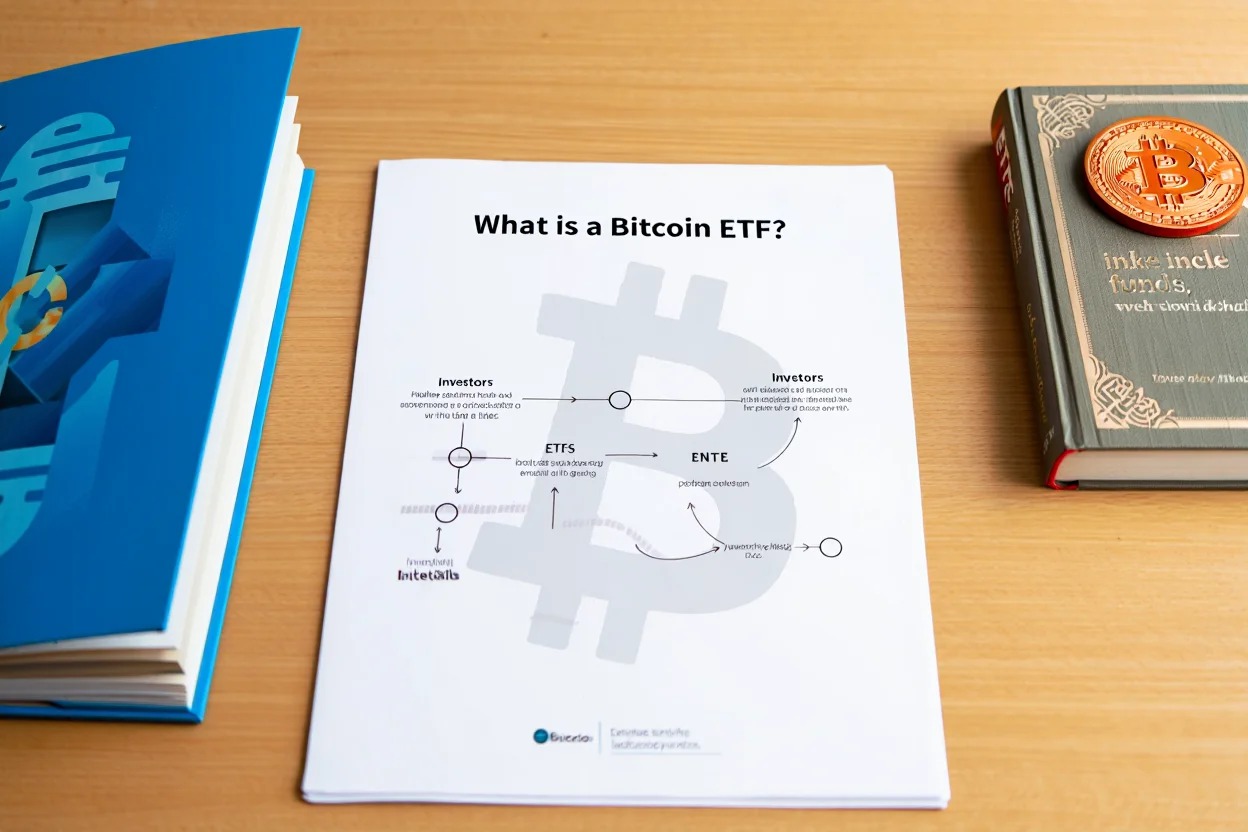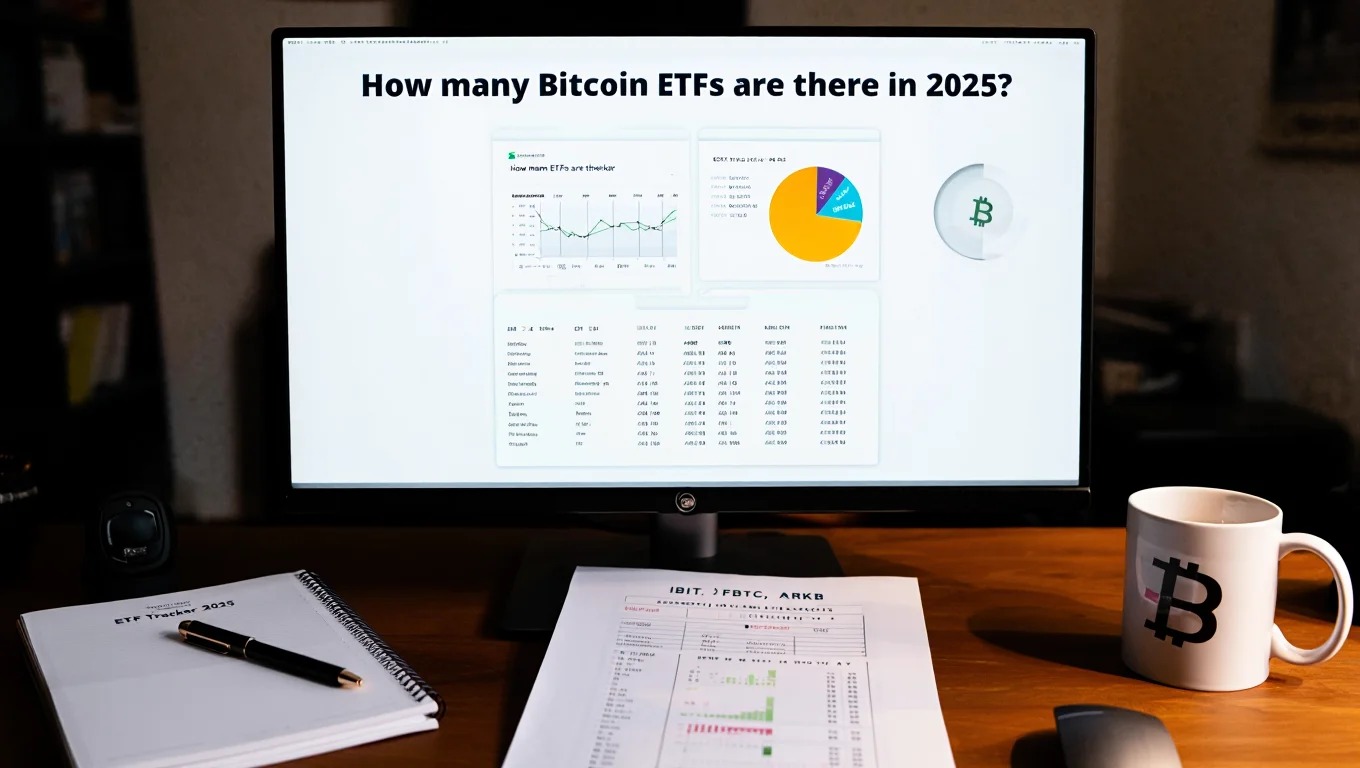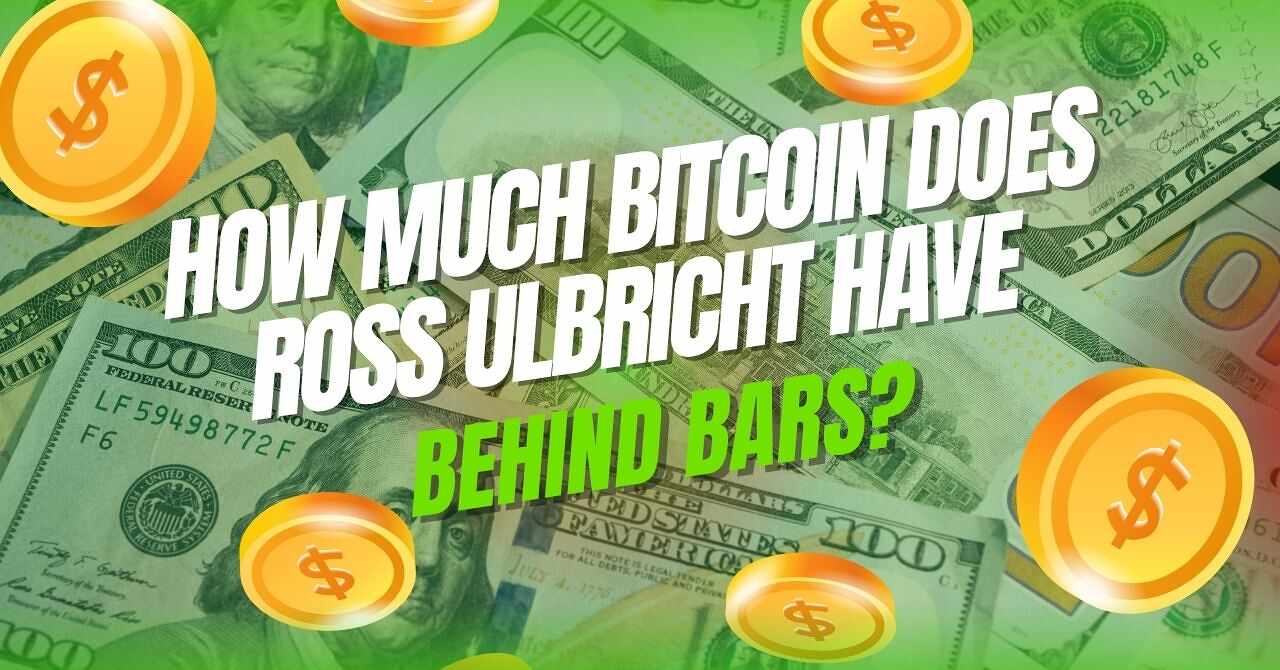How many Bitcoin ETFs are there? As of mid-2025, the United States is home to over 11 SEC-approved spot Bitcoin ETFs, featuring powerhouse names like BlackRock, Fidelity, and Grayscale, delivering exciting opportunities for investors to tap into Bitcoin’s potential through trusted brokerage accounts without directly holding the cryptocurrency.
This comes after evaluating dozens of proposals over several years, raising the question: how many Bitcoin ETF applications are there, and which ones have finally made it through
In this article, Vietnam-USTrade dives into the vibrant lineup of approved Bitcoin ETFs, highlights the key advantages of spot versus futures ETFs, and uncovers how these dynamic options can elevate your crypto investment strategy in 2025.
Whether you’re a curious beginner or a seasoned investor, this guide gives you the clarity, tools, and checklist to make smart, informed decisions in a fast-evolving digital asset market.
1. What is a Bitcoin ETF?
How many Bitcoin ETFs are there? A Bitcoin ETF, or exchange-traded fund, is a financial product that allows investors to gain exposure to Bitcoin without directly owning the cryptocurrency. Similar to traditional ETFs, it is traded on stock exchanges and mirrors the price movement of an underlying asset in this case

Bitcoin ETFs offer investors the convenience of traditional brokerage accounts while avoiding the complexities of crypto wallets, private keys, or digital security. These ETFs are regulated by financial authorities and are typically issued by asset managers or investment firms.
There are two main types of Bitcoin ETFs: spot Bitcoin ETFs and futures Bitcoin ETFs. Each has a distinct structure and implications for investors, which we will explore further in the next sections.
2. How many Bitcoin ETFs are there in 2025?
As of mid-2025, the United States Securities and Exchange Commission (SEC) has approved 11 Bitcoin spot ETF list, reflecting a significant shift in regulatory stance and market maturity.

Below is a list of the 11 spot Bitcoin ETFs that have received approval in the U.S:
| ETF Name | Issuer | Type | Year Approved |
| iShares Bitcoin Trust (IBIT) | BlackRock | Spot | 2024 |
| Grayscale Bitcoin Trust (GBTC) | Grayscale | Spot | 2024 (converted) |
| Wise Origin Bitcoin Fund (FBTC) | Fidelity | Spot | 2024 |
| VanEck Bitcoin Trust (HODL) | VanEck | Spot | 2024 |
| ARK 21Shares Bitcoin ETF (ARKB) | ARK Invest | Spot | 2024 |
| Bitwise Bitcoin ETF (BITB) | Bitwise | Spot | 2024 |
| Franklin Bitcoin ETF (EZBC) | Franklin Templeton | Spot | 2024 |
| Valkyrie Bitcoin Fund (BRRR) | Valkyrie | Spot | 2024 |
| Invesco Galaxy Bitcoin ETF (BTCO) | Invesco | Spot | 2024 |
| Hashdex Bitcoin ETF (DEFI) | Hashdex | Spot | 2024 |
| WisdomTree Bitcoin Fund (BTCW) | WisdomTree | Spot | 2024 |
With these 11 spot products now approved, many investors wonder: how many ETFs does Bitcoin have in total, including both spot and futures categories? The answer reflects a rapidly evolving financial ecosystem for digital assets
Futures-based ETFs, which track Bitcoin futures contracts rather than actual Bitcoin, have been available since October 2021. The rapid expansion of the cryptocurrency ETF list reflects increasing institutional demand and a maturing crypto investment environment.
For investors wondering how many Bitcoin ETFs are there, the growing number spanning both futures-based and spot-based products underscores the accelerating interest from both retail and institutional players.
3. Spot vs. futures: The two categories of Bitcoin ETFs.
Understanding the difference between spot and futures Bitcoin ETFs is critical when deciding where to invest. With the growing interest in crypto-backed investment vehicles, many investors are now asking, “How many Bitcoin ETFs are there?”
The answer continues to evolve as regulators approve more products and asset managers expand their offerings across both spot and futures markets.
3.1 Spot Bitcoin ETFs
- Directly hold Bitcoin in custody.
- Reflect the real-time market price of Bitcoin.
- Lower management costs in some cases.
- Subject to crypto custody risks, but they offer transparency.

Spot vs futures The two categories of Bitcoin ETFs
3.2 Futures Bitcoin ETFs
- Do not hold actual Bitcoin.
- Rely on Bitcoin futures contracts traded on regulated exchanges.
- May experience price deviations due to roll costs or contango.
- Often have higher fees and tracking errors.
| Feature | Spot Bitcoin ETF | Futures Bitcoin ETF |
| Underlying asset | Actual Bitcoin | Bitcoin futures |
| Price accuracy | High | May deviate |
| Liquidity | Increasing | Generally higher |
| Cost structure | Often lower fees | Higher management costs |
| Market maturity needed | High | Lower |
Each ETF type serves different investor profiles. Spot ETFs are ideal for those seeking direct exposure, while futures ETFs may suit short-term traders or funds managing derivatives portfolios.
View more:
- What date is Bitcoin halving? Everything you need to know for 2025
- How do I buy Bitcoins with a credit card? [2025]
- How many Bitcoins have been lost forever?
4. Why do Bitcoin ETFs matter to investors?
Bitcoin ETFs are more than just another product they represent a milestone in bridging traditional finance and digital assets. For investors, they offer regulated access to Bitcoin exposure without the complexities of direct ownership.
As institutional adoption accelerates, many are beginning to ask, “How many Bitcoin ETFs are there?” a question that highlights the expanding landscape of both spot and futures-based offerings in global markets.
- Convenience: Gain exposure to Bitcoin using standard brokerage accounts.
- Regulatory clarity: Invest in regulated products without navigating crypto exchanges.
- Portfolio diversification: Include crypto exposure in traditional asset allocations.
- Lower entry barriers: Avoid the technical hurdles of owning Bitcoin directly.

Why do Bitcoin ETFs matter to investors
Bitcoin ETFs also encourage institutional inflows, providing price stability and increased legitimacy. As more capital flows into these products, the broader market benefits from improved liquidity and investor confidence.
From personal experience, as someone who started with direct Bitcoin purchases in 2017, the emergence of ETFs has dramatically simplified exposure for newer investors in my circle who previously avoided crypto due to perceived complexity or security concerns.
5. Performance and capital flows of Bitcoin ETFs
Since spot Bitcoin ETFs were approved in early 2024, they have drawn over $100 billion in capital inflows, reflecting strong investor demand.

Some key trends include:
- iShares Bitcoin Trust (IBIT) and Fidelity Wise Origin Bitcoin Fund are leading in daily volume and net inflows.
- IBIT alone reached $70 billion in AUM by mid-2025, holding over 662,500 BTC, or roughly 3% of Bitcoin’s total supply.
- A shift from futures ETFs to spot ETFs due to lower tracking error and improved price correlation.
These data points reflect growing maturity in the crypto investment sector, especially among retail and institutional investors looking for efficient, regulated vehicles.
As the market evolves, a common question arises: “How many Bitcoin ETFs are there?” The rising number of approved ETFs both futures-based and spot-based demonstrates strong demand for compliant, accessible exposure to Bitcoin through traditional financial infrastructure.
The strong capital flows into Bitcoin ETFs have also coincided with a more stable and appreciating Bitcoin price in early 2025, reinforcing the positive market sentiment.
6. How to evaluate and choose a Bitcoin ETF
While answer how many Bitcoin ETFs are there? Choosing the right Bitcoin ETF depends on your investment goals, risk tolerance, and time horizon is impostant. Here’s a checklist to guide your evaluation:
- Does the ETF hold actual Bitcoin (spot) or only futures contracts?
- Is it approved by the SEC or other regulators?
- Who is the issuer? Do they have a strong track record?
- What are the management fees and total expense ratios?
- How transparent are the holdings and custodial arrangements?
- How liquid is the ETF on the market?
When I help clients assess Bitcoin ETFs, I always recommend comparing their fund fact sheets, checking their price tracking vs Bitcoin itself, and reviewing recent capital inflows to gauge popularity and performance. These steps ensure better alignment with long-term investment goals.
Discover more articles to sharpen your crypto knowledge:
7. Future outlook: What’s next for Bitcoin ETFs?
Looking ahead, the growth of Bitcoin ETFs is poised to continue as crypto adoption expands globally. Possible future developments include:
- More international regulators are approving similar ETFs in Europe, Asia, and Latin America.
- Expansion into multi-asset crypto ETFs, staking-based ETFs, or thematic blockchain ETF products.
- Lower fees and better custody infrastructure are expected as competition increases.
With ETF providers constantly innovating and financial institutions deepening their interest in digital assets, Bitcoin ETFs are likely to become standard tools in diversified portfolios similar to gold ETFs in the past decade.
8. Frequently asked questions (FAQ)
8.1 What is the difference between spot and futures Bitcoin ETFs?
Spot ETFs hold real Bitcoin, while futures ETFs invest in contracts predicting Bitcoin’s future price.
8.2 Are Bitcoin ETFs safe to invest in?
They are regulated products, offering a safer way to gain crypto exposure, but still carry market risks.
8.3 Can I buy Bitcoin ETFs from my brokerage account?
Yes, most major brokerages allow you to purchase Bitcoin ETFs like other stocks.
8.4 Which Bitcoin ETF is the best-performing in 2025?
iShares Bitcoin Trust and Fidelity’s Wise Origin ETF are currently top performers.
8.5 Why did the SEC approve Bitcoin ETFs only recently?
Increased market maturity, institutional demand, and improved custodial infrastructure helped sway regulators.
8.6 What are the 11 bitcoin ETFs list?
The 11 approved spot Bitcoin ETFs (as of 2024) include: BlackRock (IBIT), Fidelity (FBTC), Grayscale (GBTC), Bitwise (BITB), Ark/21Shares (ARKB), Invesco Galaxy (BTCO), VanEck (HODL), WisdomTree (BTCW), Valkyrie (BRRR), Franklin Templeton (EZBC), and Hashdex.
8.7 What is the most popular bitcoin ETF?
BlackRock’s iShares Bitcoin Trust (IBIT) is currently the most popular Bitcoin ETF by inflows and assets under management.
9. Conclusion
How many Bitcoin ETFs are there in 2025? There are now more than 10 Bitcoin ETFs approved in the U.S., primarily spot ETFs that hold actual Bitcoin and track its price closely. These funds offer a regulated, accessible, and diversified way to gain exposure to the world’s leading cryptocurrency, without the complexity of wallets or private keys.
If you’re looking to invest:
- Choose ETFs with solid issuers like BlackRock or Fidelity.
- Compare fee structures and price tracking accuracy.
- Align the ETF type spot or futures with your risk and time horizon.
Explore our 2025 Bitcoin ETF Comparison Guide featuring fees, performance, and fund structure analysis to help you pick the right ETF with confidence. And don’t forget to follow the Bitcoin section on Vietnam-USTrade for fresh ETF updates, market trends, and crypto investing insights.





